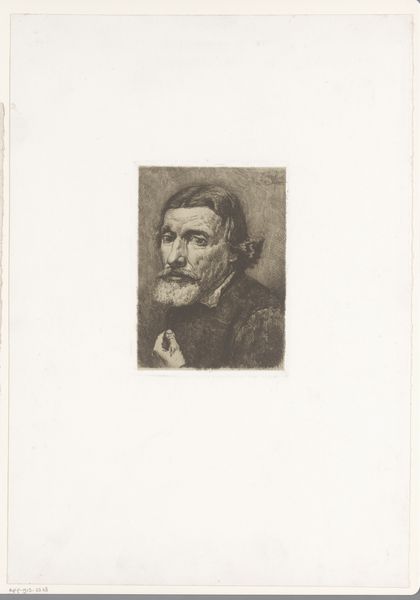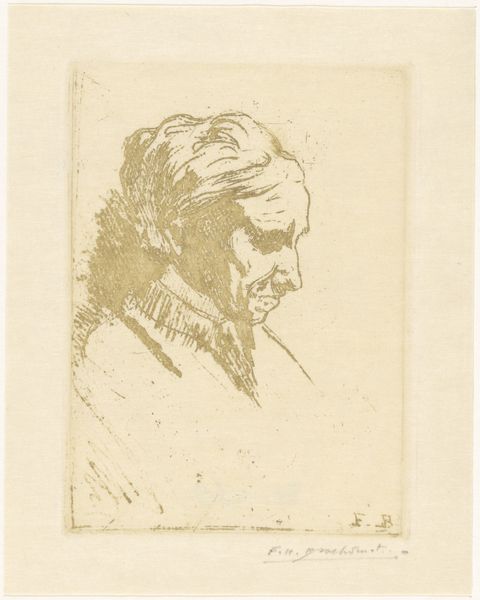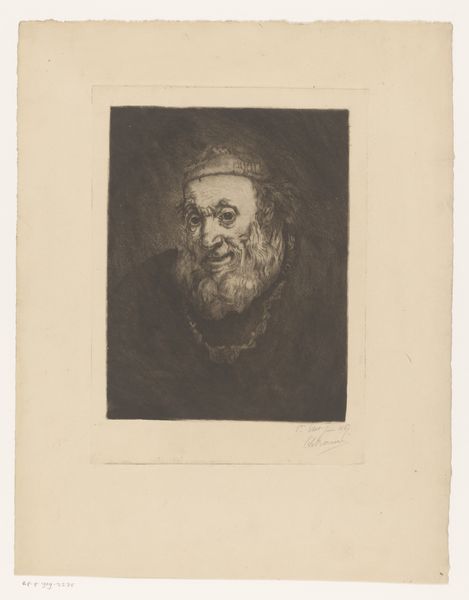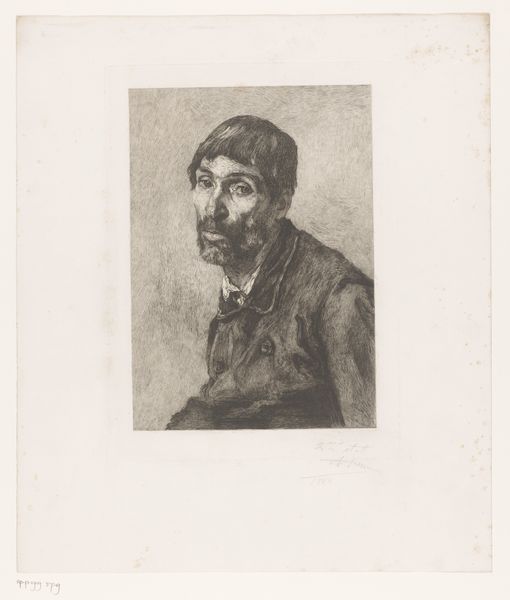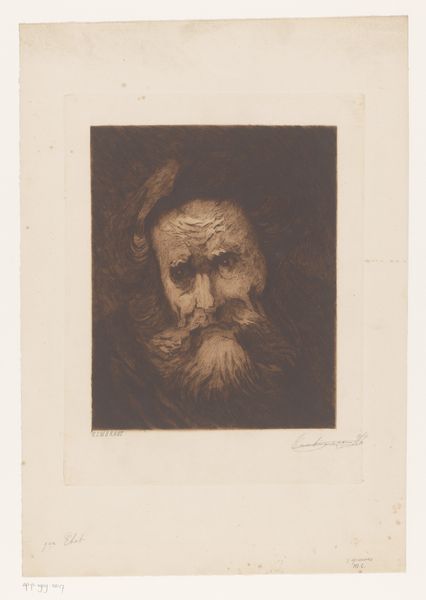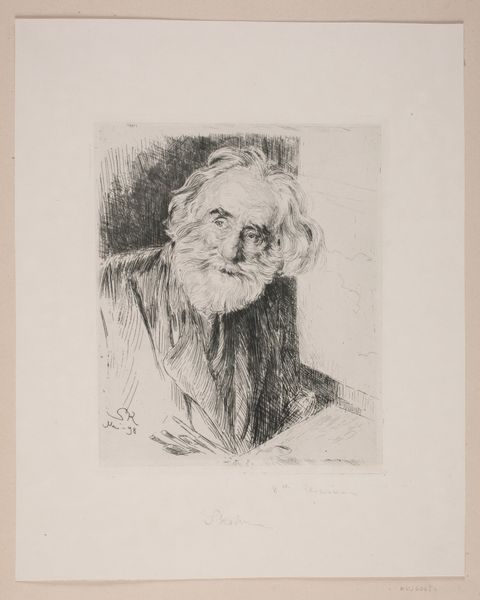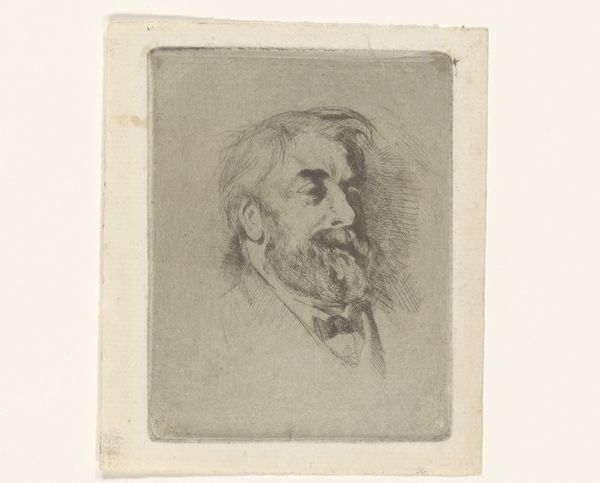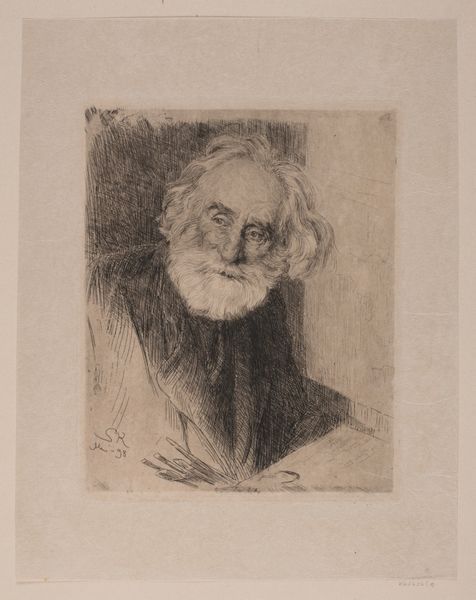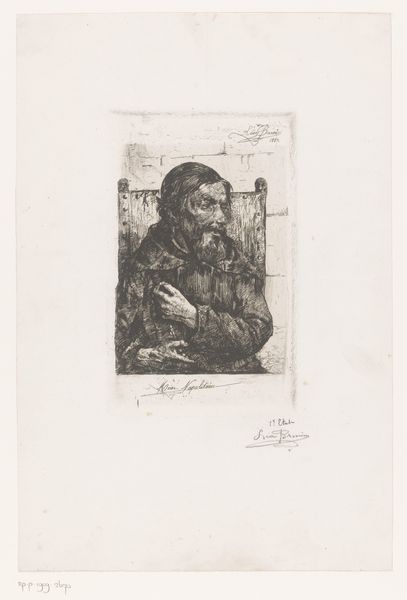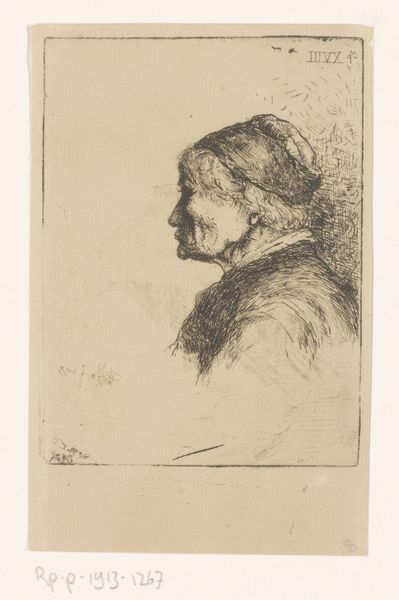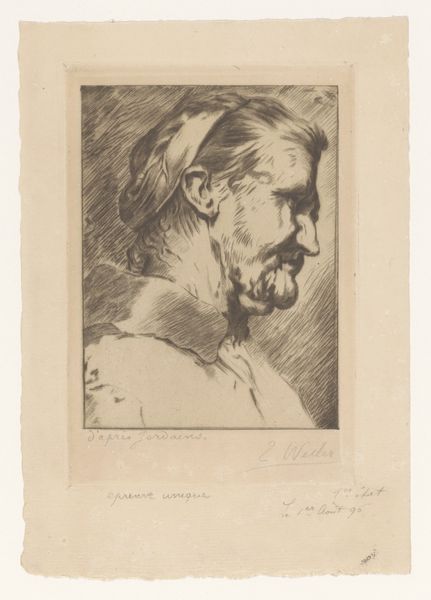
drawing, print, etching
#
portrait
#
pencil drawn
#
drawing
# print
#
etching
#
pencil sketch
#
charcoal drawing
#
pencil drawing
#
realism
Dimensions: height 159 mm, width 120 mm
Copyright: Rijks Museum: Open Domain
Curator: Here we have a print dating back to 1888 titled "Hoofd van een man met baard," which translates to "Head of a Man with Beard." The artist is T. van Riet, and the medium used here is etching. What strikes you about this portrait? Editor: Initially, I'm struck by the somber, almost world-weary expression of the man. There's a vulnerability hinted at, contrasting the typical stoicism associated with male portraits of that era. The texture created by the etching technique is very tactile. Curator: Indeed. Van Riet's choice of etching allows for intricate detail, especially in the man's beard and the lines around his eyes, providing a certain psychological depth. Prints like these were also quite accessible to a broader public than oil paintings; how might that impact the understanding of art in society? Editor: The accessibility is key. A print allows a wider audience to engage with art and perhaps imagine themselves reflected in the sitter, regardless of social class. His slight downturned glance also brings up the question: Was this portrait meant to empower or merely observe? Curator: Well, the late 19th century witnessed a shift in portraiture towards depicting the individual's inner character, partly influenced by new developments in psychology and burgeoning class consciousness. I would like to stress the rise of independent identities and public expression around that period. Editor: I can certainly see it. The gaze almost directly challenges the viewer. But it could simply indicate reflection as well; the image feels very intimate, like the viewer is intruding on a private moment, prompting questions of what kind of emotional narrative is allowed, or forbidden, from being expressed through art? Curator: That’s an insightful point. The context in which this print would have been viewed - in homes, studios or smaller galleries - shifts our perception as opposed to how a royal portrait looms large within palaces for the public. The scale of artistic experience shapes interpretation so very much. Editor: Yes, definitely. Well, looking at it from today’s perspectives, it highlights how identities are visually performed but also socially contextualized. "Hoofd van een man met baard" becomes not just a portrait, but also an intimate dialogue spanning time, culture, and politics. Curator: A good point on which to conclude this journey through representation, etching, and the evolution of perception. Editor: It's been a pleasure digging into this piece, and imagining what this thoughtful face might represent for different people and times.
Comments
No comments
Be the first to comment and join the conversation on the ultimate creative platform.
